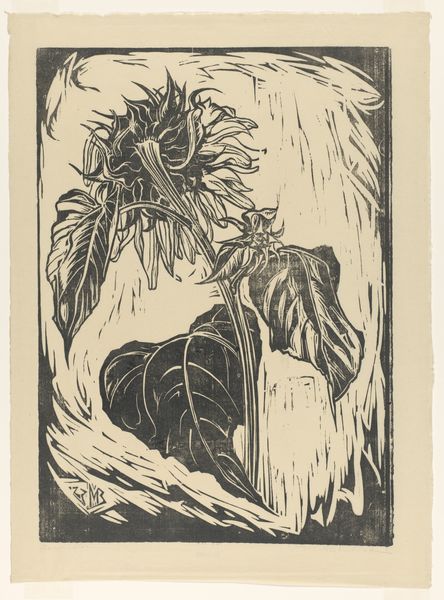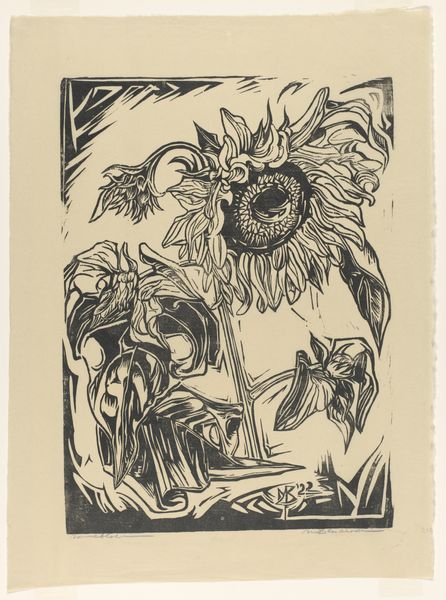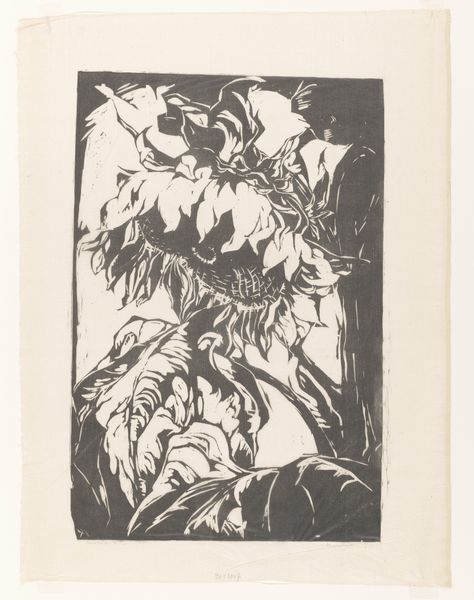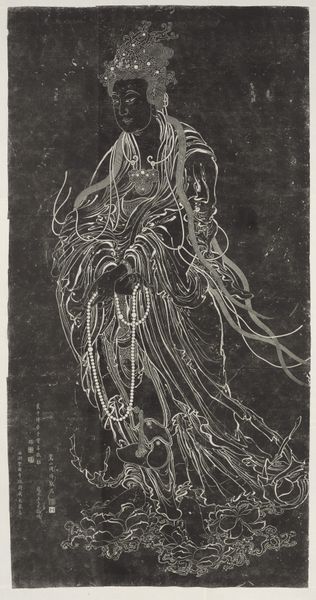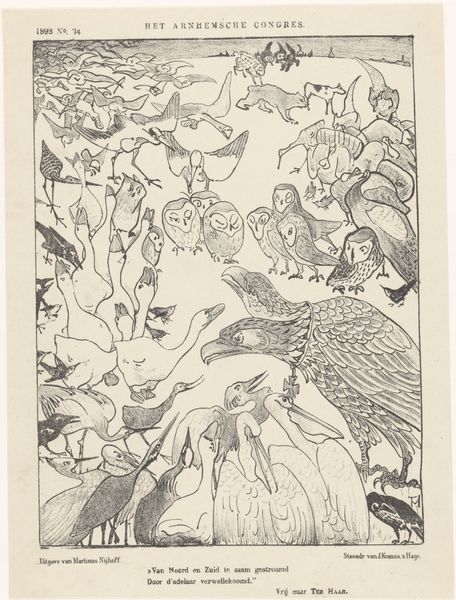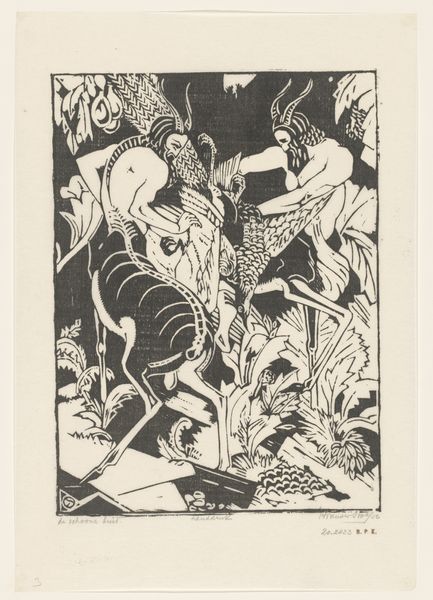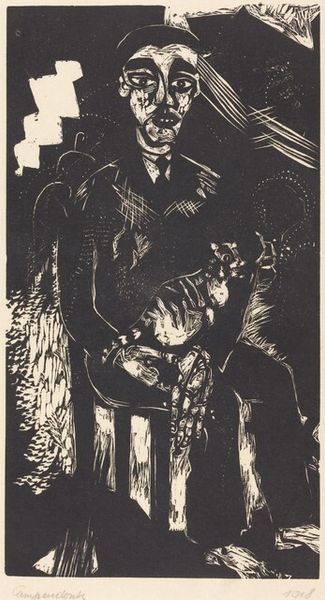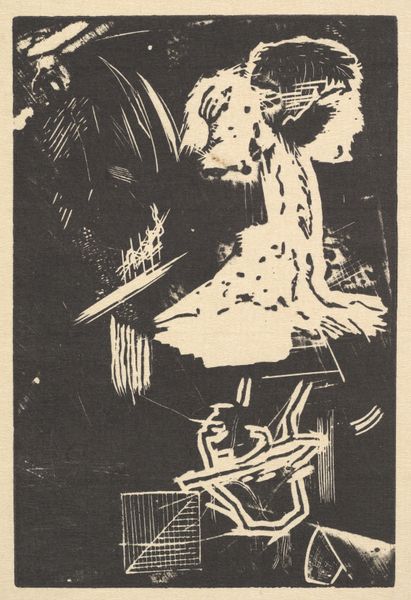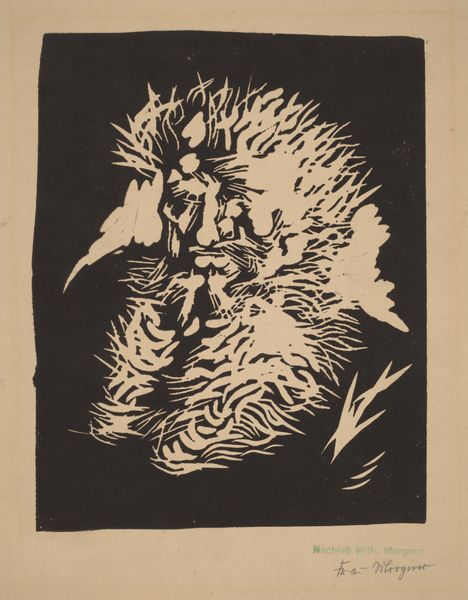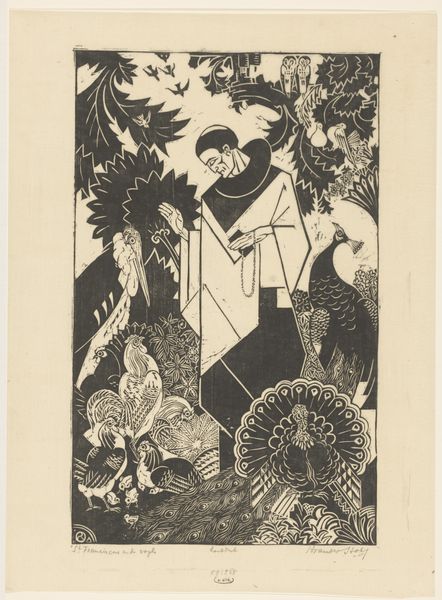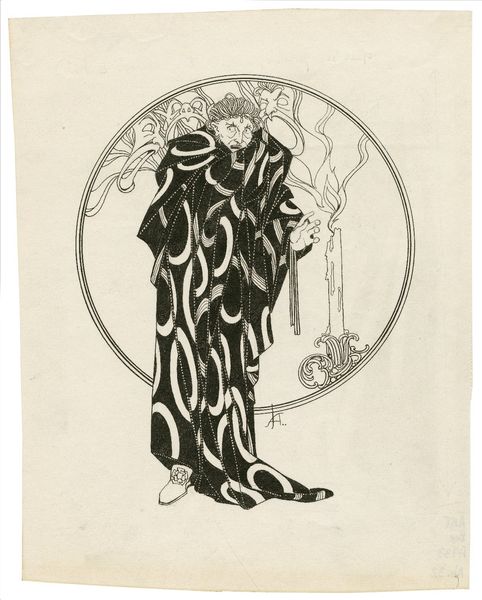
print, woodcut
# print
#
woodcut
#
symbolism
Dimensions: height 550 mm, width 414 mm
Copyright: Rijks Museum: Open Domain
Curator: Editor: We're looking at Henri van der Stok’s "Sic transit..." a woodcut print created between 1880 and 1932. The sharp contrast and dense composition create a rather morbid feel. What jumps out to you about the materials or techniques used? Curator: Well, the immediate thing is the medium itself. The choice of woodcut – with its inherent limitations and graphic strength – is significant. Woodcuts, historically associated with folk art and broadsides, were being reclaimed by artists in the late 19th century for their expressive potential. Consider the labour involved: the deliberate carving away, the conscious decisions about what to reveal and conceal. Van der Stok wasn't just depicting sunflowers; he was actively engaging with the means of production. Editor: So, the *how* is as important as the *what*? I guess I tend to focus on symbolism – the sunflowers as representations of life, the spider web as mortality, which, okay, fits with your emphasis of labor as each image is crafted into being. Curator: Precisely! Look at how the black ink interacts with the stark white of the paper. That tension, created by the carving process, is crucial to understanding the artwork’s message. Does this specific application elevate it from craft to art, and where might the symbolic "content" emerge from this interplay? Editor: That’s a useful reframing for me. So instead of just seeing it as "symbolism," I need to consider the active artistic choices embedded in the printing process that reflect social practices. It almost encourages a more socially conscious reading, acknowledging labor and production as much as symbolic meanings. Curator: Indeed. It also allows us to look at the print’s position within the broader art market. Who was buying these prints? What social class were they intended for? Analyzing the material circumstances surrounding the creation and consumption of art offers new interpretations and acknowledges artistic work as just that – work. Editor: That's helpful. Considering the print through that lens opens up new paths of understanding. Curator: Absolutely. We've hopefully shed some light on the multifaceted role of the material in shaping both the artwork and its reception.
Comments
No comments
Be the first to comment and join the conversation on the ultimate creative platform.
